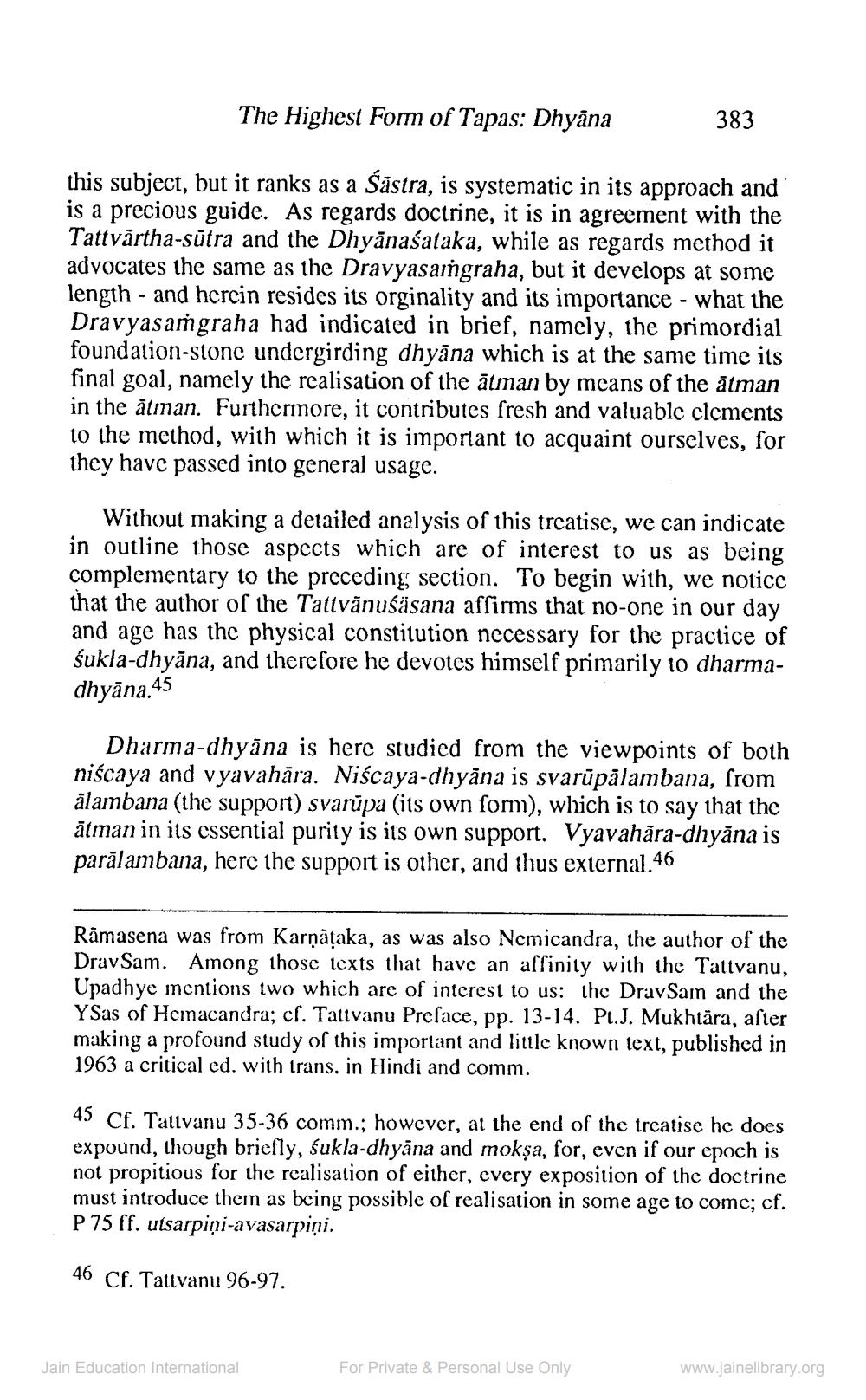________________
The Highest Form of Tapas: Dhyāna
383
this subject, but it ranks as a Šāstra, is systematic in its approach and is a precious guide. As regards doctrine, it is in agreement with the Tattvārtha-sūtra and the Dhyānaśataka, while as regards method it advocates the same as the Dravyasamgraha, but it develops at some length - and herein resides its orginality and its importance - Dravyasamgraha had indicated in brief, namely, the primordial foundation-stone undergirding dhyāna which is at the same time its final goal, namely the realisation of the ātman by means of the ātman in the atman. Furthermore, it contributes fresh and valuable elements to the method, with which it is important to acquaint ourselves, for they have passed into general usage.
Without making a detailed analysis of this treatise, we can indicate in outline those aspects which are of interest to us as being complementary to the preceding section. To begin with, we notice that the author of the Tattvānuśäsana affirms that no-one in our day and age has the physical constitution necessary for the practice of śukla-dhyāna, and therefore he devotes himself primarily to dharmadhyāna.45
Dharma-dhyāna is here studied from the viewpoints of both niscaya and vyavahāra. Niścaya-dhyāna is svarūpālambana, from älambana (the support) svarūpa (its own sorm), which is to say that the ātman in its essential purity is its own support. Vyavahāra-dhyāna is parălambana, here the support is other, and thus external. 46
Rāmasena was from Karņāțaka, as was also Nemicandra, the author of the DravSam. Among those texts that have an affinity with the Tattvanu,
Upadhye mentions two which are of interest to us: thc DravSam and the YSas of Heinacandra; cf. Tativanu Preface, pp. 13-14. P.J. Mukhtara, aster making a profound study of this important and little known text, published in 1963 a critical ed. with trans. in Hindi and comm.
45 Cf. Tativanu 35-36 comm.; however, at the end of the treatise he does expound, though briefly, śukla-dhyāna and mokșa, for, even if our epoch is not propitious for the realisation of either, every exposition of the doctrine must introduce them as being possible of realisation in some age to come; cf. P75 ff. utsarpiņi-avasarpiņi.
46 Cf. Talivanu 96-97.
Jain Education International
For Private & Personal Use Only
www.jainelibrary.org




